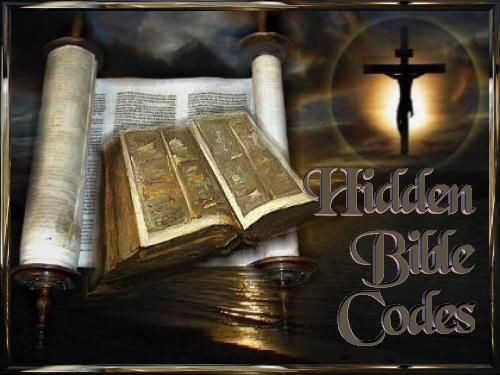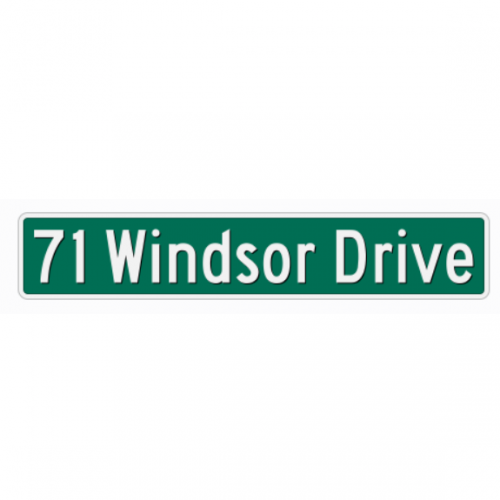
Scripture for the Day Oct 25th 2020: Faith Builder-Jesus in Genesis
Hidden Codes in the Bible
The last two Sunday devotional discussed hidden codes of different types. Today, we add yet another deep meaning to the evidence of design: the TYPE.
The Bible is an extraterrestrial message system. It accurately prophecies events thousands of years ahead of time. So it was with the Akedah.
The Akedah is the Hebrew word for the famous story of Abraham offering his son Isaac in Genesis Chapter 22.
Genesis 22:2
“And he said, Take now thy son, thine only son Isaac, whom thou lovest, and get thee into the land of Moriah; and offer him there for a burnt offering upon one of the mountains which I will tell thee of.”
What is going on here? Does God endorse Child Sacrifice? He doesn't.
But the story has confused many scholars and unbelievers alike for centuries.
Genesis 22:3
“And Abraham rose up early in the morning, and saddled his ***, and took two of his young men with him, and Isaac his son, and clave the wood for the burnt offering, and rose up, and went unto the place of which God had told him.”
Abraham doesn't hesitate either. First thing in the morning, he saddles his donkey, takes his son and two employees, and off he goes to Mount Moriah.
The Topology of Mount Moriah
Below is a topographical map of Mount Moriah. Mount Moriah is a ridge system between the Mount of Olives to the east and Mount Zion to the west. It is bounded by the Kidron Valley on the east, the Tyropean Valley on the west, and the Hinom Valley to the south.
The ridge begins at the south at about 600 meters above sea level and rises to a peak as one goes northward. At the base of this ridge was the town of Salem at which Melchizedek was both the king and the priest.71 This later becomes Ophel, the city of David, and ultimately, Jerusalem.
Higher on the ridge, at about 741 meters above sea level, is a saddle point where Ornan later owned a threshing floor, which would eventually be purchased by David to become the site of Solomon’s Temple.72 (A threshing floor was not necessarily at the peak; it was typically a saddlepoint which enjoyed a prevailing wind which could be used to separate the chaff from the grain when threshed at harvest times.)
The peak of the Mount is a bit further north, at about 777 meters above sea level, at a place which would later become known as Golgotha—the exact spot where Jesus Christ would be crucified as the offering for sin 2,000 years later.
As we begin to understand the typology of this narrative, we begin to appreciate the subtleties in the account. Abraham had an earlier son, Ishmael, but for God’s purposes here, Isaac is viewed as “your only son.”
Careful students of the Scripture have noted The Law of First Mention: that the first occurrence of a word in the Scripture is usually a very significant instance in the overall design. It is profoundly significant that this account includes the first occurrence of the word love in the Scripture.
6] And Abraham took the wood of the burnt offering, and laid it upon Isaac his son; and he took the fire in his hand, and a knife; and they went both of them together.
7] And Isaac spake unto Abraham his father, and said, My father: and he said, Here am I, my son. And he said, Behold the fire and the wood: but where is the lamb for a burnt offering?
Good question, Isaac. You can appreciate the lad’s concern. Notice Abraham’s response:
8] And Abraham said, My son, God will provide himself a lamb for a burnt offering: so they went both of them together.
“God will provide” who? Himself! Was this also just a stall? Did Abraham realize that he was acting out a prophecy? Two thousand years later—on that very spot—another Father would offer His Son as the offering of all time!
9] And they came to the place which God had told him of; and Abraham built an altar there, and laid the wood in order, and bound Isaac his son, and laid him on the altar upon the wood.
We are all victims of our Sunday School coloring books: we always picture Isaac as a small boy. Some scholars maintain that Isaac was about 30 years old.
10] And Abraham stretched forth his hand, and took the knife to slay his son.
11] And the angel of the LORD called unto him out of heaven, and said, Abraham, Abraham: and he said, Here am I.
12] And he said, Lay not thine hand upon the lad, neither do thou any thing unto him: for now I know that thou fearest God, seeing thou hast not withheld thy son, thine only son from me.
13] And Abraham lifted up his eyes, and looked, and behold behind him a ram caught in a thicket by his horns: and Abraham went and took the ram, and offered him up for a burnt offering in the stead of his son.
Thus, we encounter the substitutionary ram.
When Adam and Eve “fell” in the Garden of Eden, even then, God taught them that by the shedding of innocent blood they would be covered.
All of the Levitical sacrifices in the Torah were designed to anticipate the climactic sacrifice for all time, also foreshadowed here.
We are the beneficiaries of a love story, written in blood on a wooden cross, which was to be erected in Judea some two thousand years later.
14] And Abraham called the name of that place Jehovahjireh: as it is said to this day, In the mount of the LORD it shall be seen.
Abraham then gave the location a prophetic label. It appears that he somehow knew that he was acting out a prophecy! Abraham also knew that Isaac, if offered, would have to be resurrected since God had previously promised Abraham that 60 Hidden Treasures Isaac would have numerous descendants.
It is interesting that Isaac was “dead” to Abraham for three days: from the time the commandment came until he was freed by the angel. Here, in this “type,” or macrocode, we have Abraham cast in the role of the Father; and Isaac as the Son. The ultimate drama of God the Father, offering His Son, are the referents or designata to which this historical narrative appears to be alluding. There is even another subsequent example in which, again, the roles, or referents, are the same.
A Bride For Isaac
Later, in Genesis 24, Abraham commissions his “eldest servant” to gather a bride for Isaac, who then travels to the designated place, qualifies the woman (Rebecca) by a well, and offers her the opportunity to marry the bridegroom she has never seen; and she accepts. She ultimately meets her bridegroom at the Well of LaHai-Roi, the “Well of the Living One [who] sees me.” Here, again, Abraham is a “type” of the Father; Isaac, the Son; and Rebecca, his bride, suggestive of the New Jerusalem.
The designation “Eldest Servant” is misleading to us: he was Abraham’s business partner and would have inherited all Abraham possessed if Abraham had not had any issue. He is cast, here, as a type of the Holy Spirit, called to gather the bride for Isaac. He is not named here, but we know from previous passages that his name was Eleazer, which means “Comforter.”
A Textual Omission?
Returning to our earlier review of Genesis 22, immediately after the substitutionary offering, we come to verse 19:
19] So Abraham returned unto his young men, and they rose up and went together to Beersheba; and Abraham dwelt at Beersheba.
Notice that in the list of who came down from the mountain to return home, only Abraham and the two young men at the bottom of the hill are listed.
Where’s Isaac?
Naturally, we infer that Isaac also joined them and that there were four who traveled back to Beersheba. But that’s not what the text says! It seems that Isaac has disappeared: the person of Isaac has been edited out of the record, from the time that he is offered on the mount until he is united with his bride, two chapters later!
It would seem that the text has been subtly tailored so as to fit the broader design, to be consistent with the larger picture; a type—or macrocode—highlighting the climax to come. We will be exploring some larger “macrocodes” in later Sunday Faith Builders. Next week, will encounter an even higher perspective by consolidating some numerical data.
The Holy Spirit designated Isaac as a type of Himself, ommitting His appearance till Chapter 24.
Bonus
As a bonus for faithful readers, watch this short video from Mt. Moriah and Golgotha. May Jesus bless you and your loved ones today and always. Amen.
[Source: Missler, Chuck, Cosmic Codes - Hidden Messages From the Edge of Eternity, Koinonia House, 1999.]
Info
Featured Articles
- ·
- · Erica Russell

- ·
- · unknown
